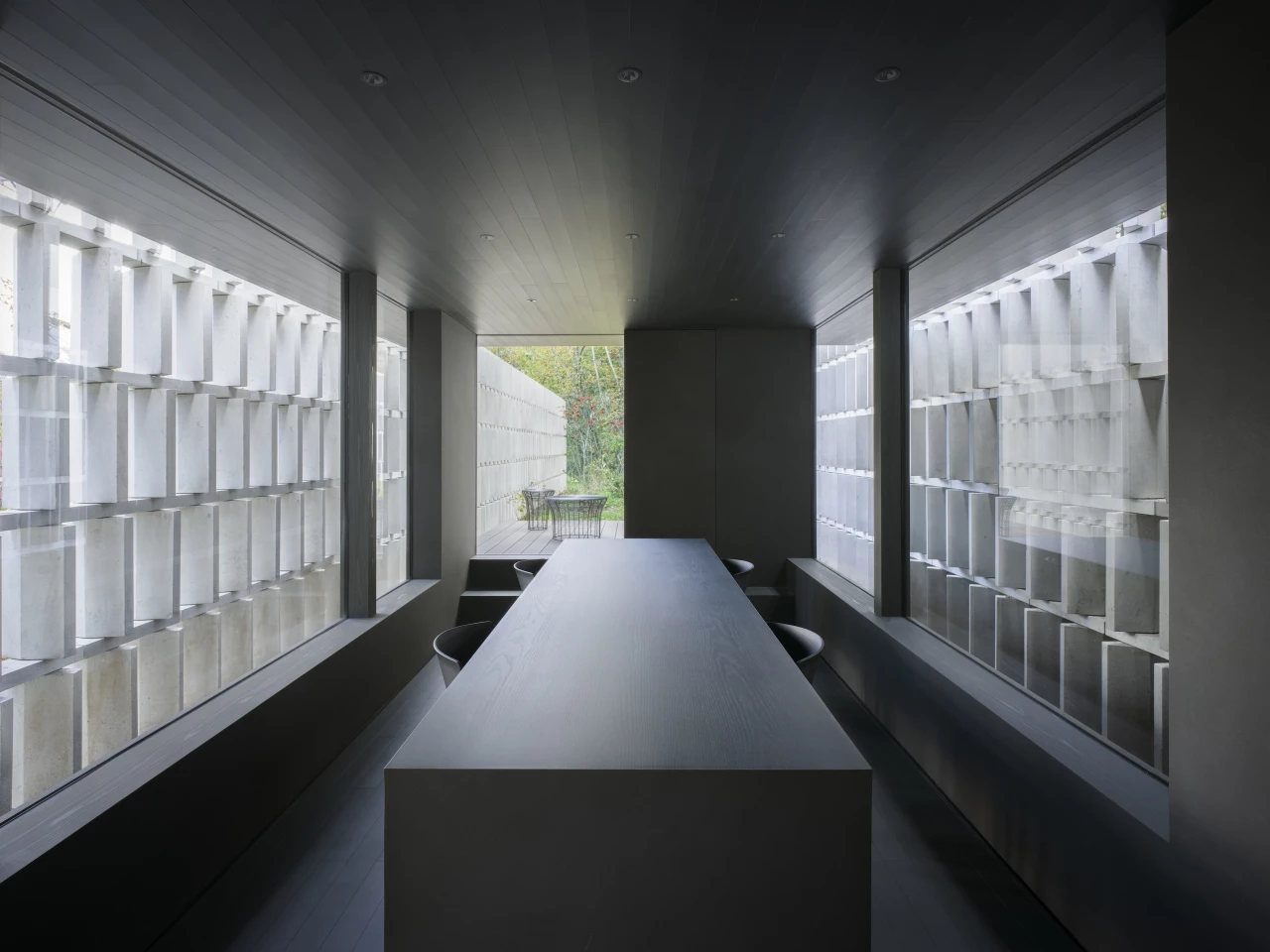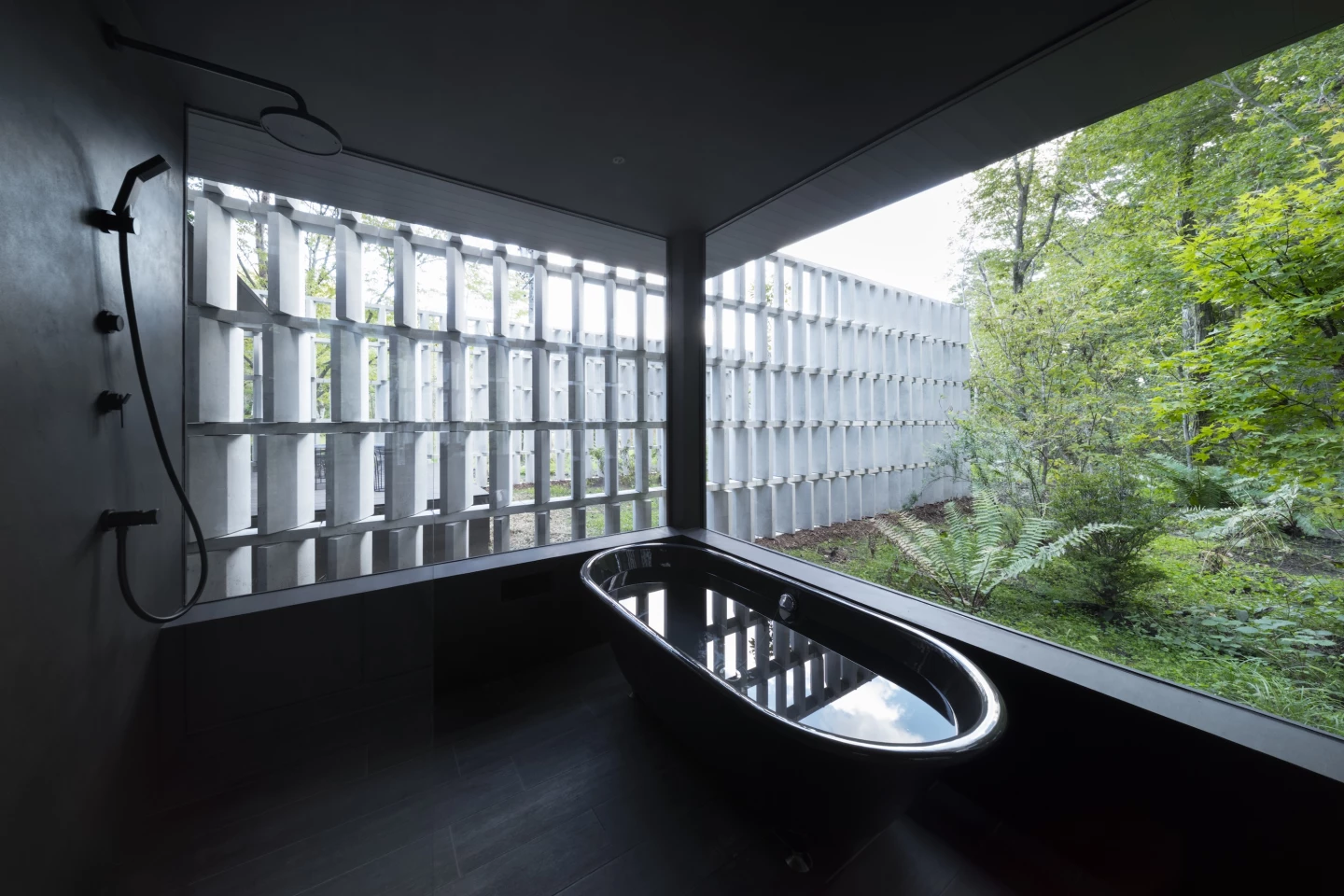The production of the cement used in concrete is a major contributor to worldwide CO2 emissions and since we're reliant on the stuff for our infrastructure, this is a serious problem. However, Nendo showcases an example of a greener way to build with its Block-Wall House, which was part-built using a novel concrete that actually captures CO2 instead of emitting it.
The Block-Wall House is located in Japan's Nagano Prefecture, next to a rural road. It has a lot of glazing, so in an attempt to offer privacy from passing vehicles and pedestrians, Nendo installed an angled screen that allows the owners to see out, but makes it harder for the casual passerby to see inside. The screen is made up of approximately 2,000 blocks arranged in parallel rows to create five walls with a combined length of 110 m (360 ft). It's this screen that's actually made from the sustainable concrete.
The concrete is made by the Kajima Corporation, in collaboration with the Chugoku Electric Power Co, Denka, and Landes Co, and is named CO2-SUICOM. During its manufacturing process, a special cement mixture is placed in a curing chamber and CO2 is then pumped into the chamber to be absorbed. The absorbed CO2 is then stuck inside the concrete, and will not be released. Crucially, it's also just as strong as regular concrete, unlike Washington State University's somewhat similar effort.

"Generally, concrete hardens through a chemical reaction between cement and water," explains Kajima Corporation. "But with CO2-SUICOM, over half the cement is replaced with a material we call γ-C2S. Instead of reacting with water, γ-C2S reacts with the CO2 in the air to harden. After mixing the materials need to create CO2-SUICOM, the concrete can be placed in a location with high CO2 levels so it can capture the CO2 and harden, trapping the gas inside. For example, a thermal power plant or other facility that produces carbon-heavy exhaust gases can redirect the gases into a carbon sequestration chamber, where concrete products made with CO2-SUICOM can be placed to capture the CO2 in the gases."
As is usually the case, the devil is in the details, however. Obviously greener concrete is a good thing in itself and under the right conditions this could be used to create net-zero infrastructure, but if it's not affordable and practical to produce, it's not going to be widely adopted.
On that note, signs are actually quite hopeful. A Kajima Corporation representative told us that the cost of producing CO2-SUICOM concrete is currently about three times higher than standard concrete used in Japan. Work is currently being undertaken on further reducing this cost and the firm believes it will become a lot more affordable in the near future.

Alongside this new concrete there have also been some other interesting efforts to make our buildings greener, including projects by Provencher Roy, the University of Tokyo and VTT Finland.
Sources: Nendo, Kajima Corporation










